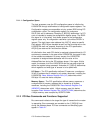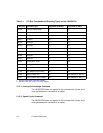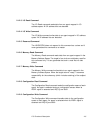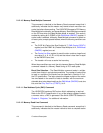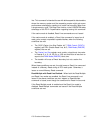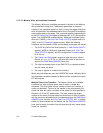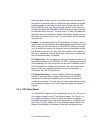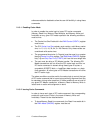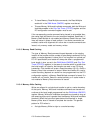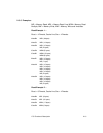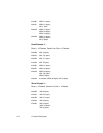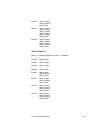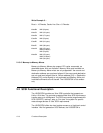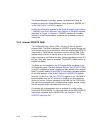PCI Functional Description 2-11
• To issue Memory Read Multiple commands, the Read Multiple
enable bit in the DMA Mode (DMODE) register must be set.
• To issue Memory Write and Invalidate commands, both the Write and
Invalidate enables in the Chip Test Three (CTEST3) register and the
PCI configuration command register must be set.
If the corresponding cache command being issued is not enabled then
the cache logic falls back to the next command enabled. Specifically, if
Memory Read Multiple is not enabled and Memory Read Lines are, read
lines are issued in place of read multiple. If no cache commands are
enabled, cache write alignment still occurs but no cache commands are
issued, only memory reads and memory writes.
2.1.3.3 Memory Read Caching
The type of Memory Read command issued depends on the starting
location of the transfer and the number of bytes being transferred. During
reads, no cache alignment is done (this is not required nor optimal per
PCI 2.2 specification) and reads will always be either a programmed
burst length in size, as set in the DMA Mode (DMODE) and Chip Test
Three (CTEST3) registers. In the case of a transfer which is smaller than
the burst length, all bytes for that transfer are read in one PCI burst
transaction. If the transfer will cross a Dword boundary (A[1:0] = 0b00) a
Memory Read Line command is issued. When the transfer will cross a
cache boundary (depends on cache line size programmed into the PCI
configuration register), a Memory Read Multiple command is issued. If a
transfer will not cross a Dword or cache boundary or if cache mode is
not enabled a Memory Read command is issued.
2.1.3.4 Memory Write Caching
Writes are aligned in a single burst transfer to get to a cache boundary.
At that point, Memory Write and Invalidate commands are issued and
continue at the burst length programmed into the DMA Mode (DMODE)
register. Memory Write and Invalidate commands are issued as long as
the remaining byte count is greater than the Memory Write and Invalidate
threshold. When the byte count goes below this threshold, a single
Memory Write burst is issued to complete the transfer. The general
pattern for PCI writes is:
• A single Memory Write to align to a cache boundary.



